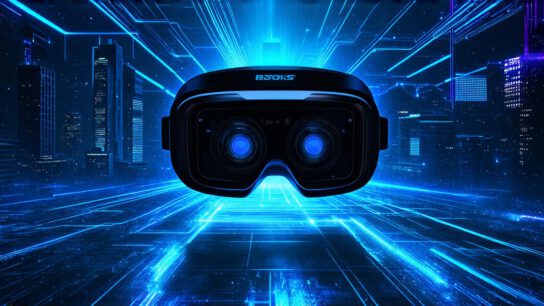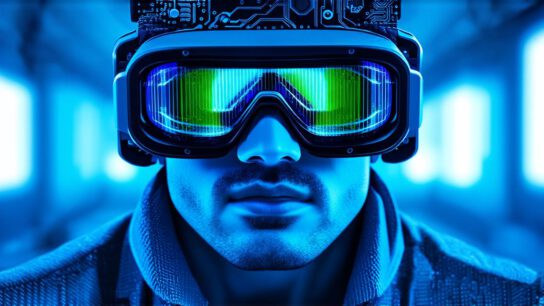Virtual reality (VR) is a technology that allows people to experience immersive and interactive environments using specialized devices such as headsets, gloves, or full-body suits. VR has already made significant progress in recent years, with advancements in hardware, software, and user experience leading to increased adoption in various industries such as gaming, education, healthcare, and entertainment.
However, some experts argue that virtual reality is not yet fully achievable and may be limited by technological constraints or ethical concerns. In this article, we will explore the current state of virtual reality technology and its potential future developments, as well as examine the challenges and limitations faced by VR in achieving widespread adoption.
Current State of Virtual Reality Technology
Virtual reality technology has come a long way since its early days. In the 1960s, Ivan Sutherland created Sketchpad, one of the first VR systems that allowed users to manipulate 3D objects using a light pen. Since then, VR technology has evolved rapidly, with advancements in display technology, motion tracking, and haptic feedback leading to more immersive and realistic experiences.
Today, there are several types of VR devices available on the market, ranging from low-end smartphone-based VR headsets to high-end PC-powered systems that offer a more advanced experience. The most popular VR platforms include Oculus Rift, HTC Vive, and PlayStation VR, which use proprietary software and hardware to create immersive environments for users.
One of the key challenges facing virtual reality technology is the cost of hardware. High-end VR systems can be expensive, with prices ranging from $1,000 to $3,000 or more. This can limit their adoption in certain markets, such as education and healthcare, where budget constraints may be a significant factor.
Another challenge facing VR technology is motion sickness. Some users experience nausea and dizziness when using VR headsets for extended periods of time, which can lead to a negative user experience. While there have been advancements in motion tracking technology, there is still work to be done to reduce the incidence of motion sickness in VR users.
Potential Future Developments in Virtual Reality Technology
Despite these challenges, experts in the field believe that virtual reality technology has significant potential for future developments. One area where VR is likely to see significant advancements is in the field of haptic feedback. Haptic feedback refers to the use of physical sensations, such as vibration or resistance, to enhance the user experience and create a more immersive environment.
One example of haptic feedback technology is the HaptX system developed by HaptX Corporation. This system uses advanced gloves equipped with sensors that can provide tactile feedback to users, allowing them to feel objects in virtual environments with a high degree of realism. While still in its early stages, HaptX has already shown promising results and could have significant implications for VR applications in fields such as education, training, and gaming.
Another area where virtual reality technology is likely to see advancements is in the field of wireless connectivity. Current VR systems require a high-speed internet connection to stream content, which can be a limitation in certain environments, such as remote locations or developing countries. However, there are ongoing efforts to develop wireless VR systems that could overcome this limitation and make VR more accessible to users around the world.
Ethical Concerns Surrounding Virtual Reality Technology
Despite the potential benefits of virtual reality technology, there are also ethical concerns that must be addressed. One major concern is the impact of VR on mental health. Studies have shown that prolonged use of VR can lead to feelings of isolation and disconnection from reality, which could have negative effects on mental health.
Another ethical concern surrounding VR technology is the potential for addiction. Some users may become so immersed in virtual environments that they neglect their real-world responsibilities and relationships, leading to a negative impact on their quality of life.
Finally, there are concerns around the use of VR technology in fields such as gaming and entertainment, where it could be used to create increasingly realistic simulations of violence and other harmful content. While some argue that these simulations can be used for educational or therapeutic purposes, others worry that they could contribute to a culture of violence and aggression.
Case Studies: Virtual Reality in Education and Healthcare
Despite these concerns, virtual reality technology is already being used in various fields, including education and healthcare. In education, VR can be used to create immersive simulations that allow students to experience historical events or scientific concepts in a more engaging way.
For example, the University of California, Irvine uses VR simulations to teach students about the human body, allowing them to explore different systems and organs with a high degree of realism.
In healthcare, VR can be used for a variety of applications, including training medical professionals, treating phobias and anxiety disorders, and providing pain relief for patients with chronic conditions. For example, the Mayo Clinic uses VR technology to train surgeons and other medical professionals, allowing them to practice complex procedures in a safe and controlled environment.
Real-Life Examples of Virtual Reality Technology
Virtual reality technology is already being used in a variety of industries, including gaming, entertainment, and education. In gaming, VR has been used to create immersive and interactive experiences that allow players to fully engage with the game world.
For example, the popular game “Beat Saber” uses VR technology to create an immersive experience that combines music and gaming in a unique way.
In entertainment, VR is being used to create new forms of content, such as 360-degree videos and interactive experiences. For example, the movie “The Martian” was released as a 360-degree video that allows viewers to explore the virtual world created for the film.
FAQs: Common Questions About Virtual Reality Technology
What is virtual reality technology?
Virtual reality (VR) is a technology that allows people to experience immersive and interactive environments using specialized devices such as headsets, gloves, or full-body suits.
How does virtual reality work?
VR technology works by creating a simulated environment that the user can interact with in real-time. This is achieved through the use of sensors, cameras, and other hardware that tracks the user’s movements and provides feedback to create a sense of immersion.
What are some common uses for virtual reality technology?
Virtual reality technology has a wide range of applications, including gaming, education, healthcare, entertainment, and training. It can be used to create immersive simulations that allow users to experience different environments and scenarios in a safe and controlled way.
What are some challenges facing virtual reality technology?
Some challenges facing VR technology include the cost of hardware, motion sickness, and ethical concerns around the use of VR in fields such as gaming and entertainment.
Is virtual reality technology still in its early stages of development?
Yes, virtual reality technology is still in its early stages of development, with ongoing research and development focused on improving haptic feedback, wireless connectivity, and other aspects of the technology.
Conclusion: Virtual Reality Technology and Its Potential Implications
Virtual reality technology has the potential to transform a wide range of industries, from gaming and entertainment to education and healthcare. However, it also raises important ethical concerns that must be addressed as the technology continues to evolve. By exploring the potential benefits and challenges of VR technology, we can better understand its role in our lives and society as a whole.



